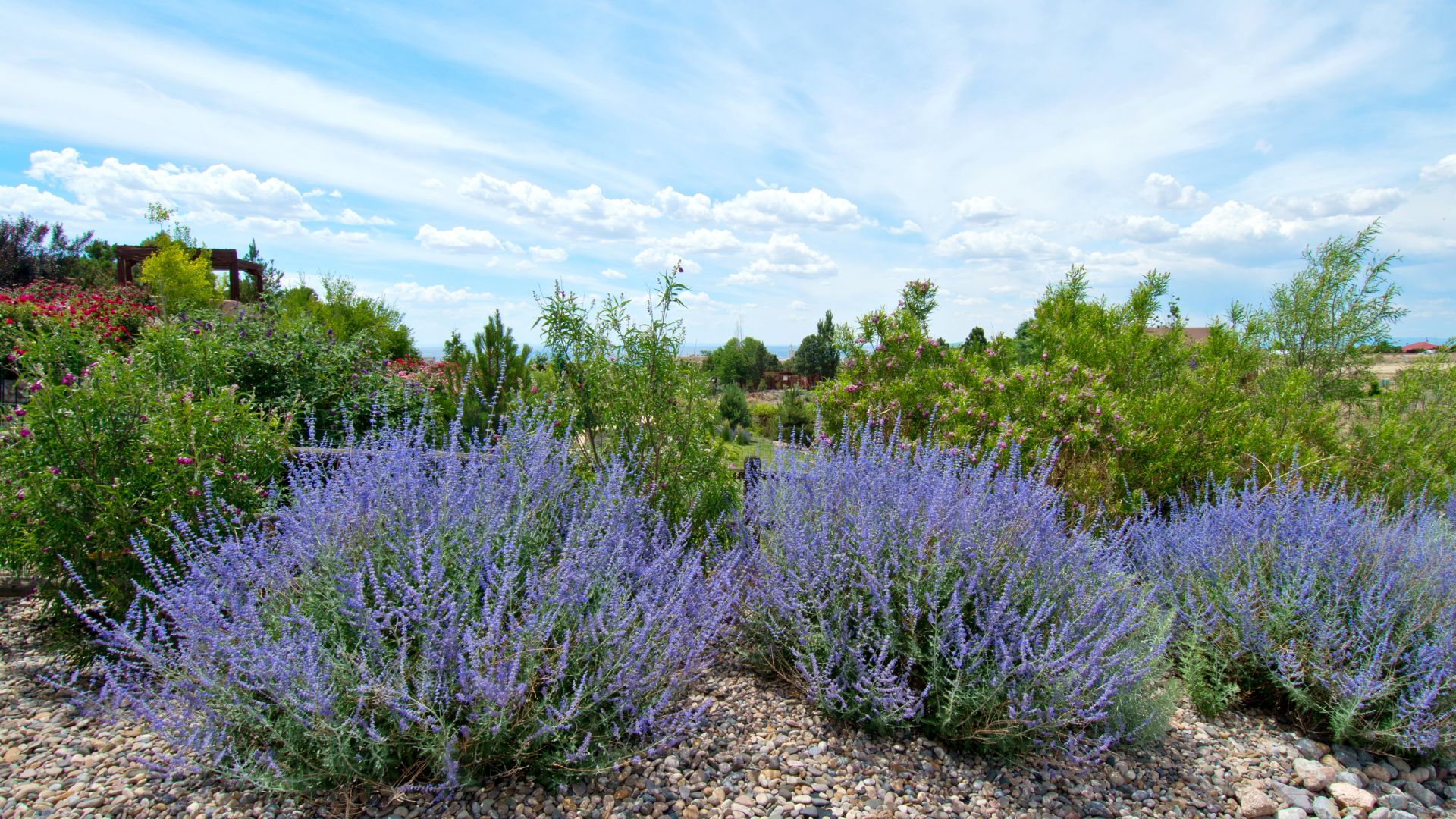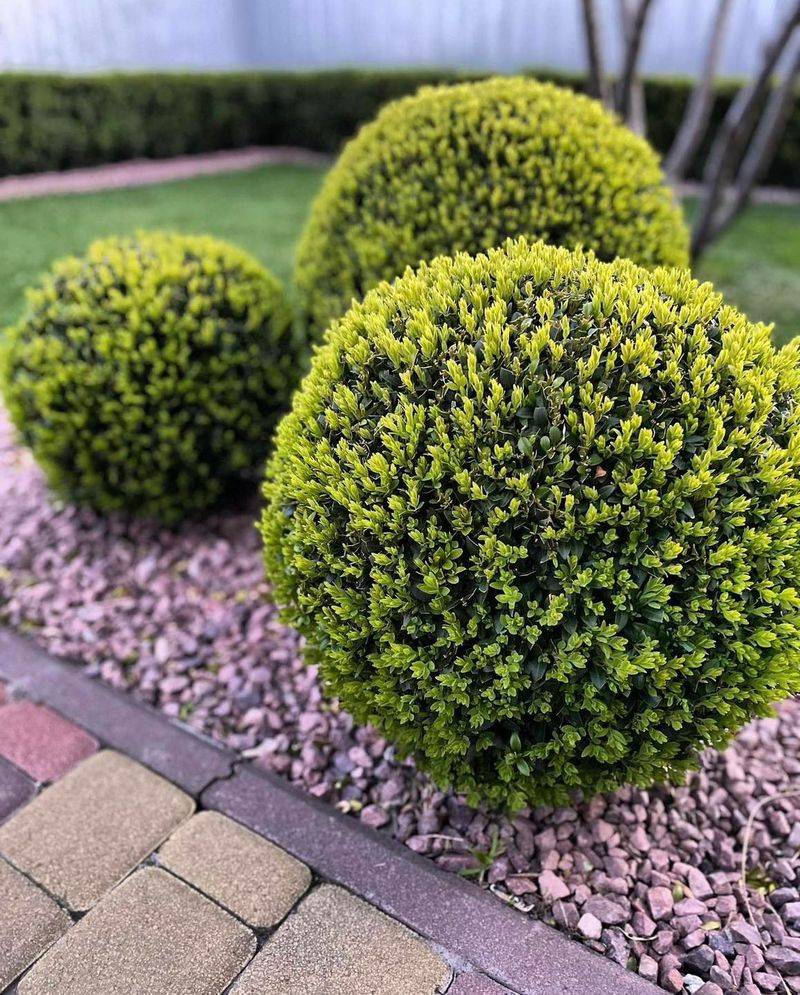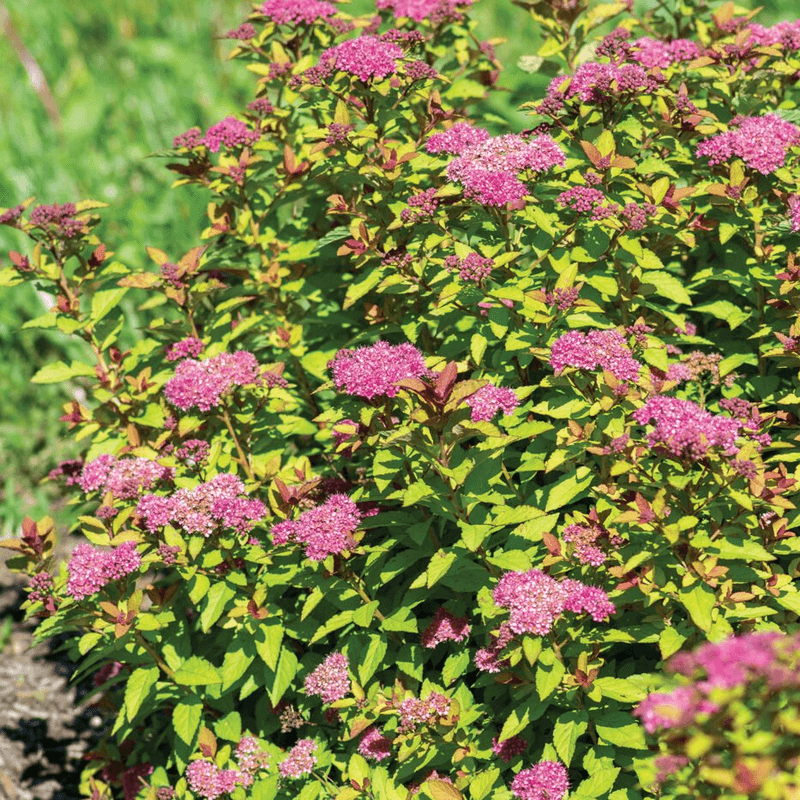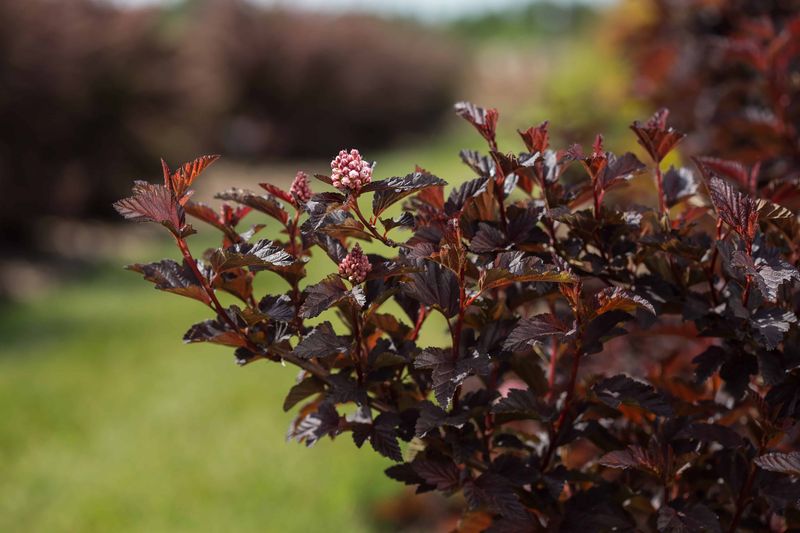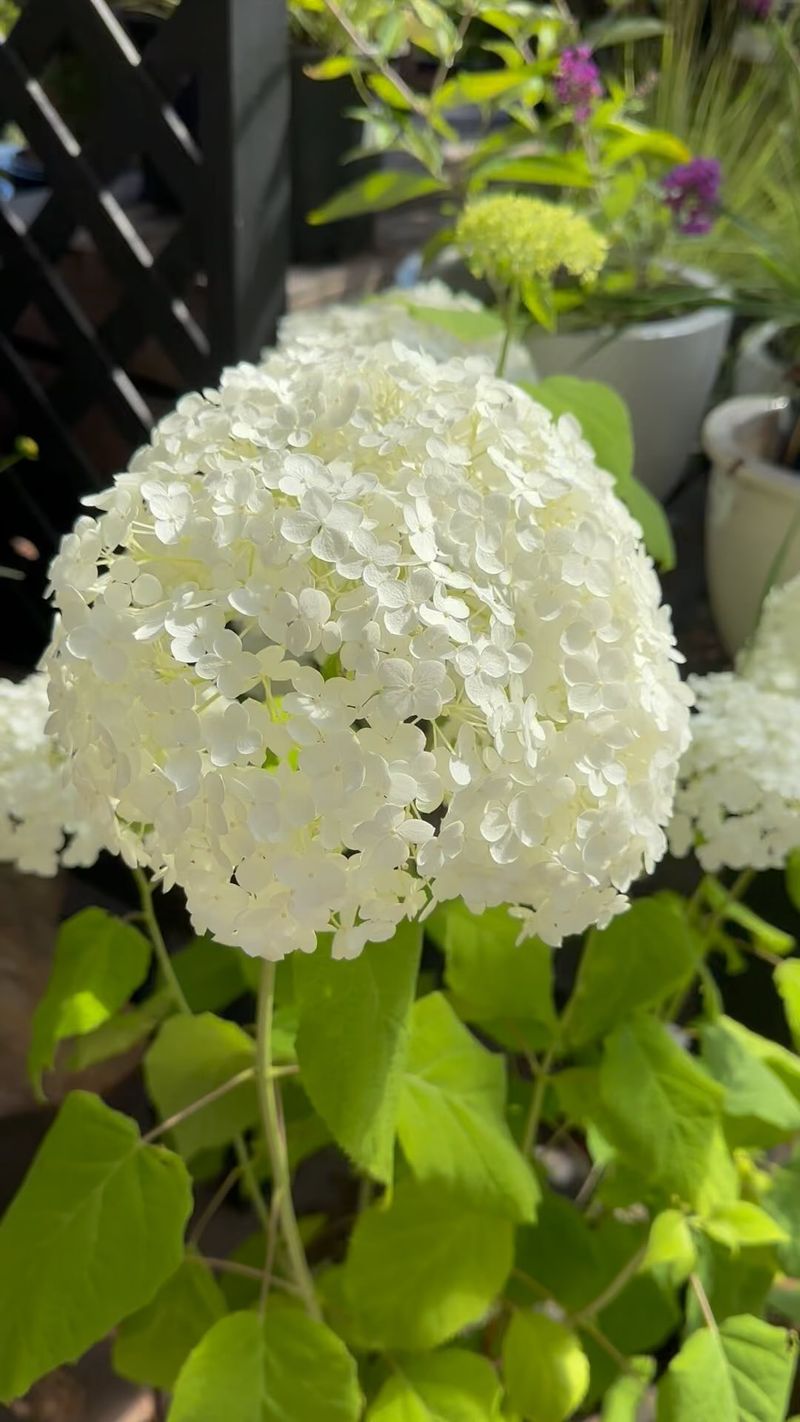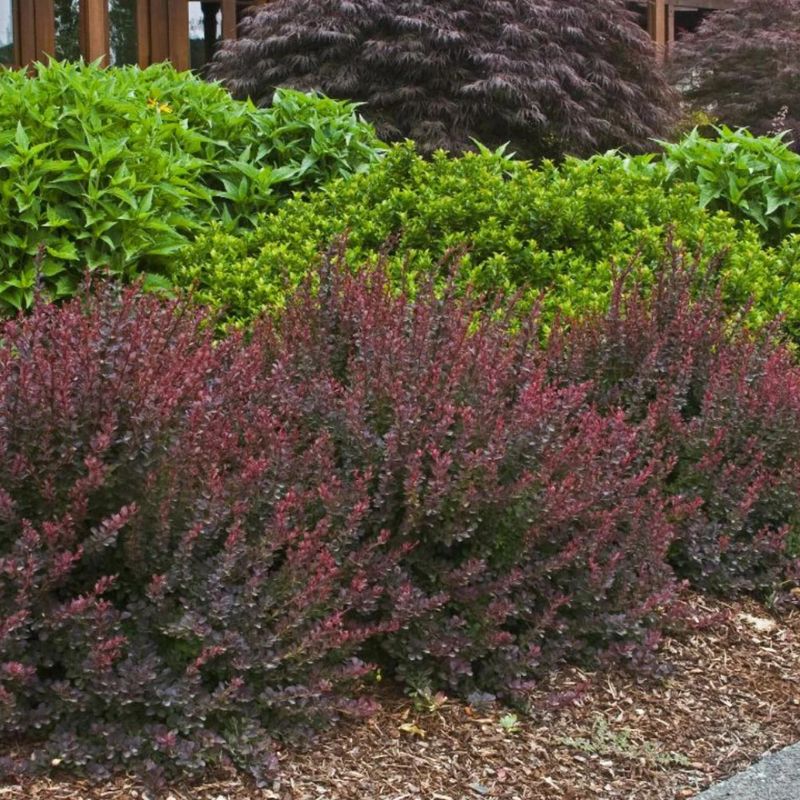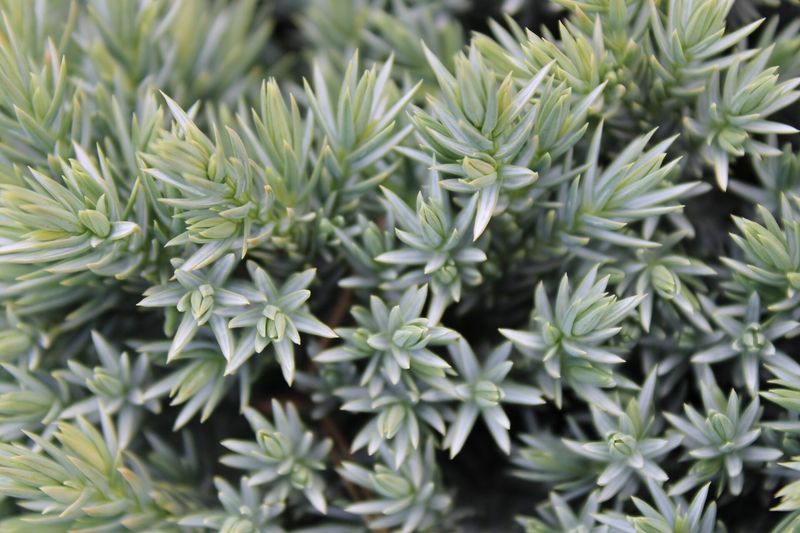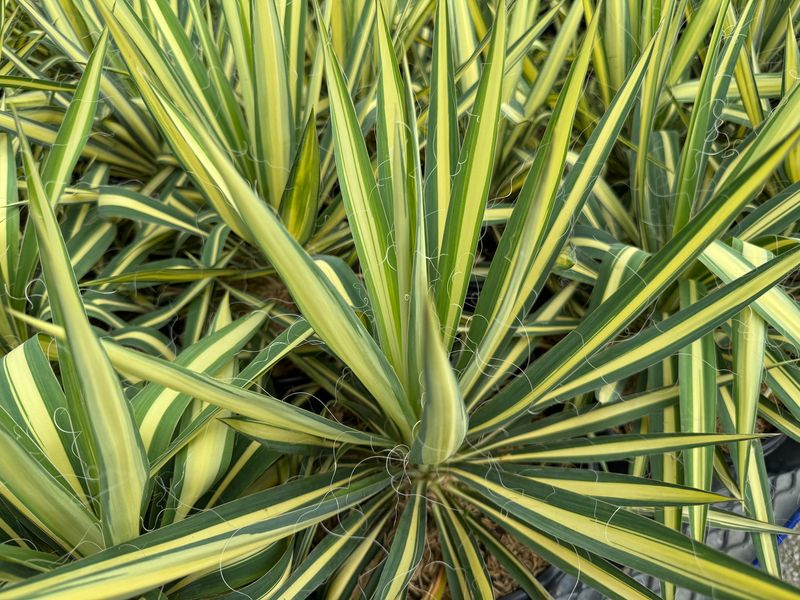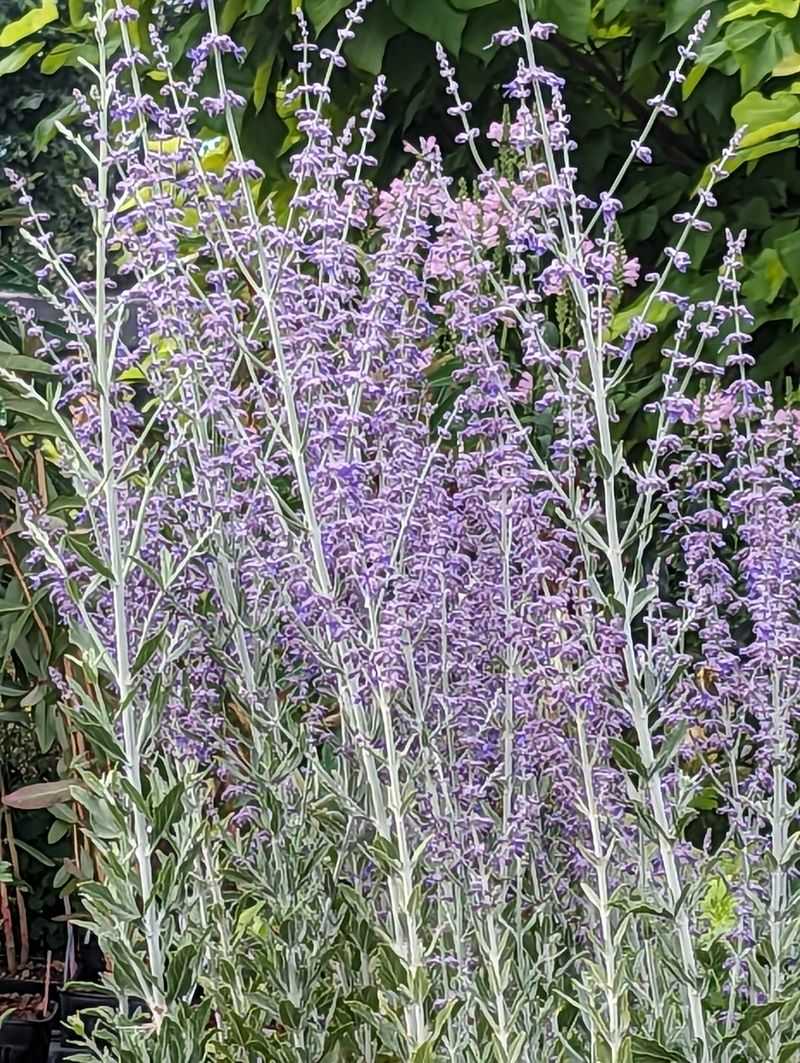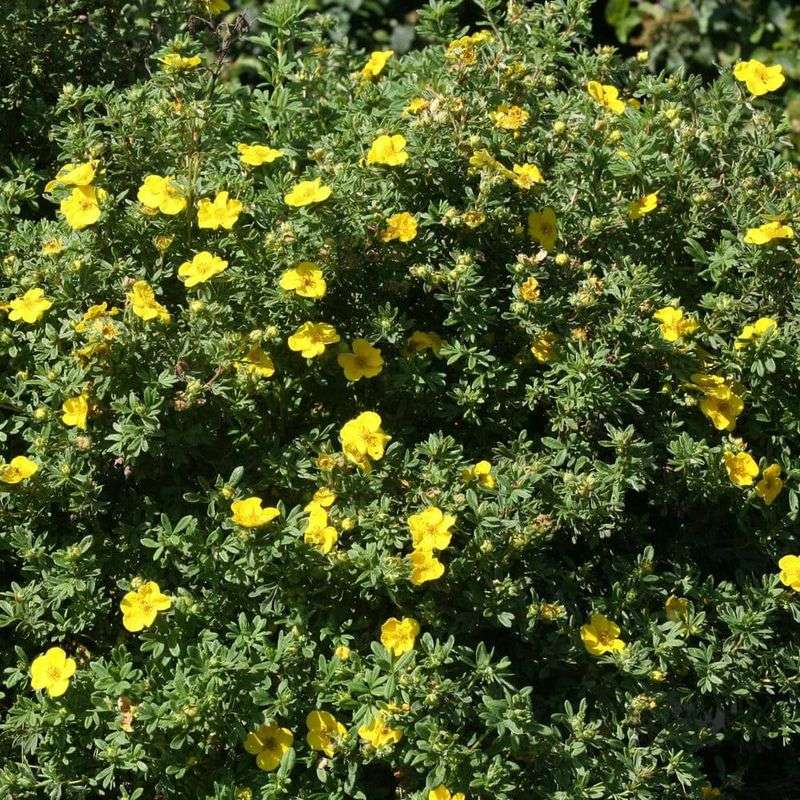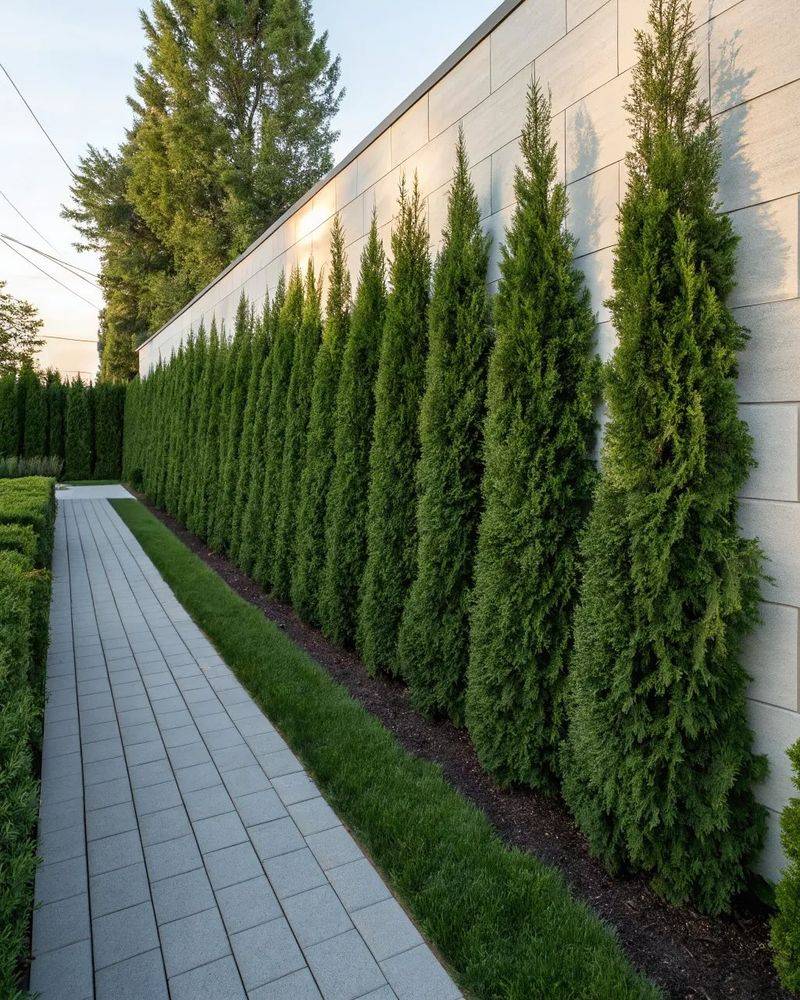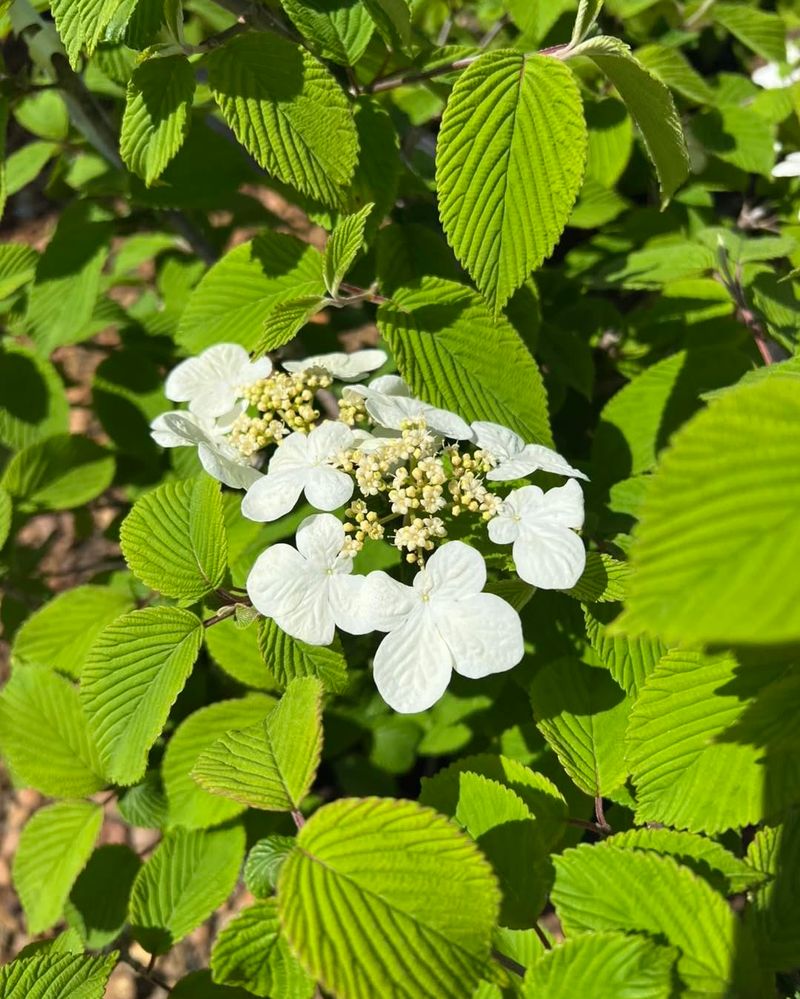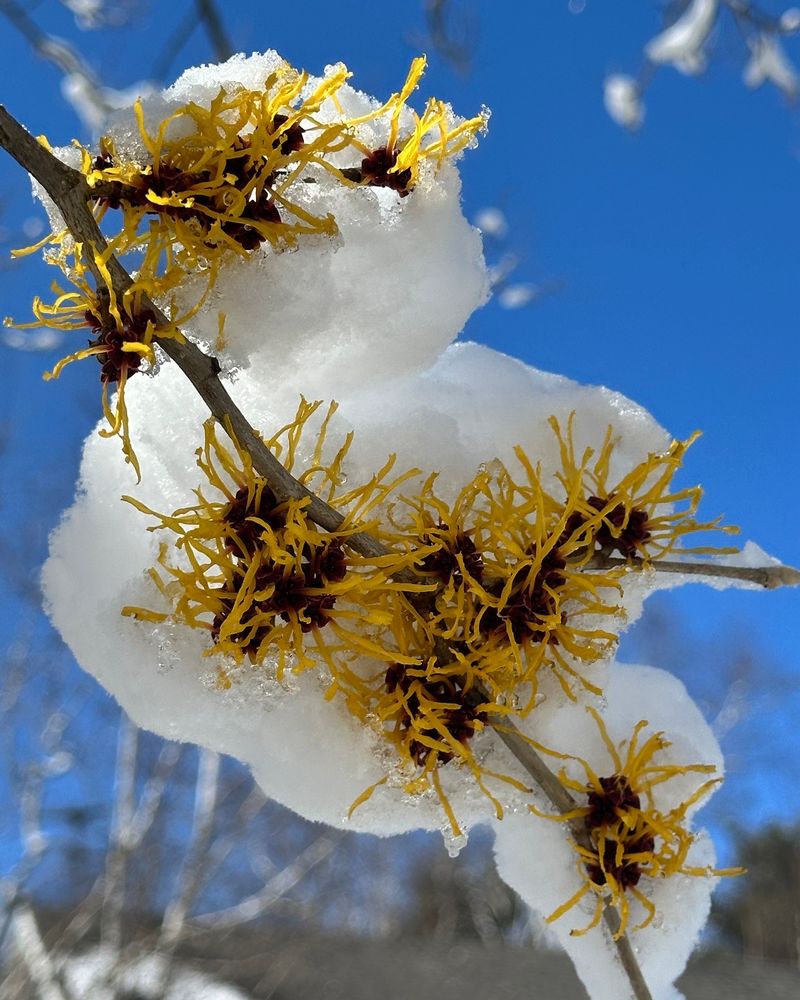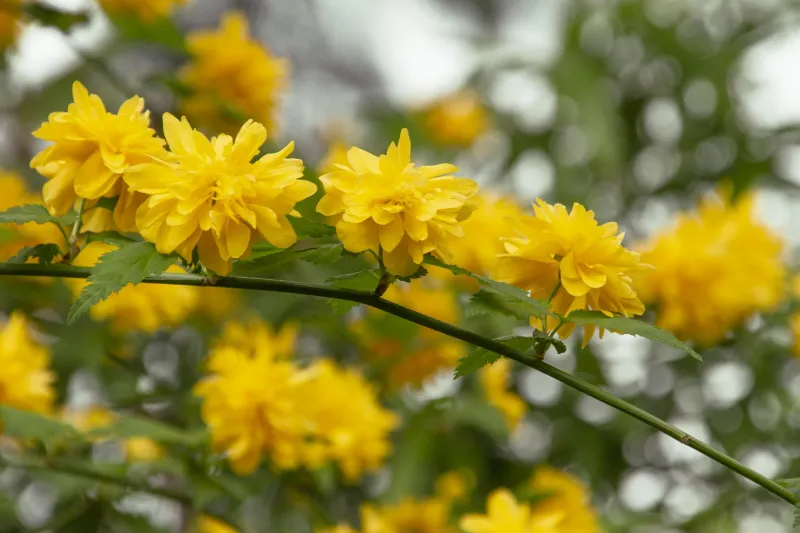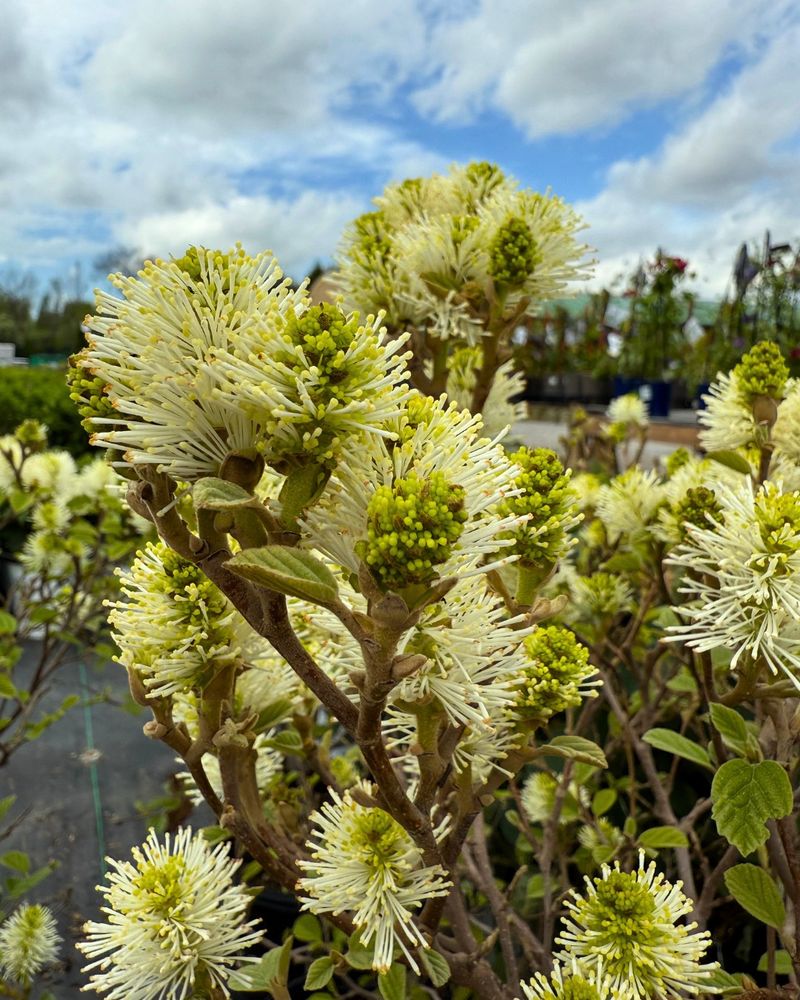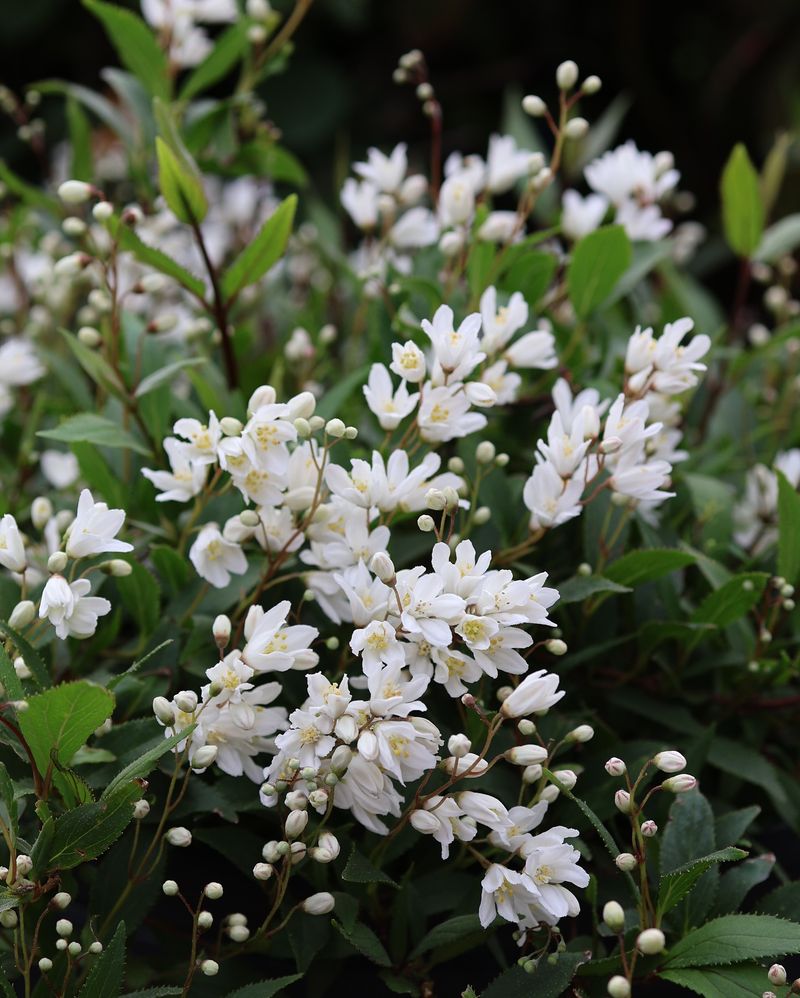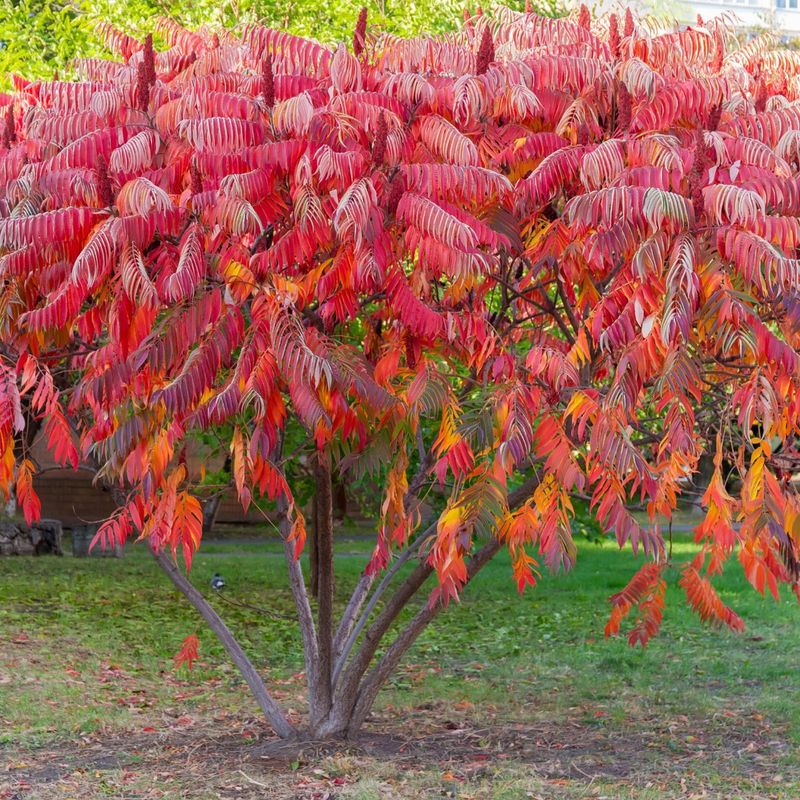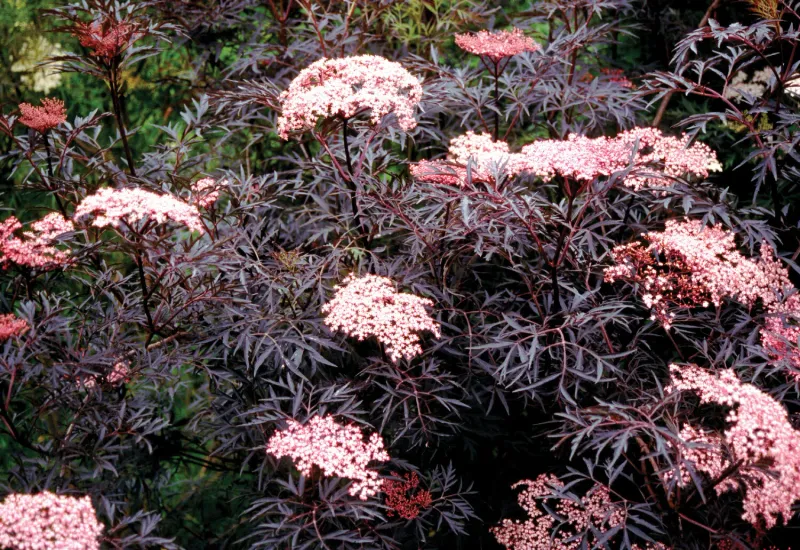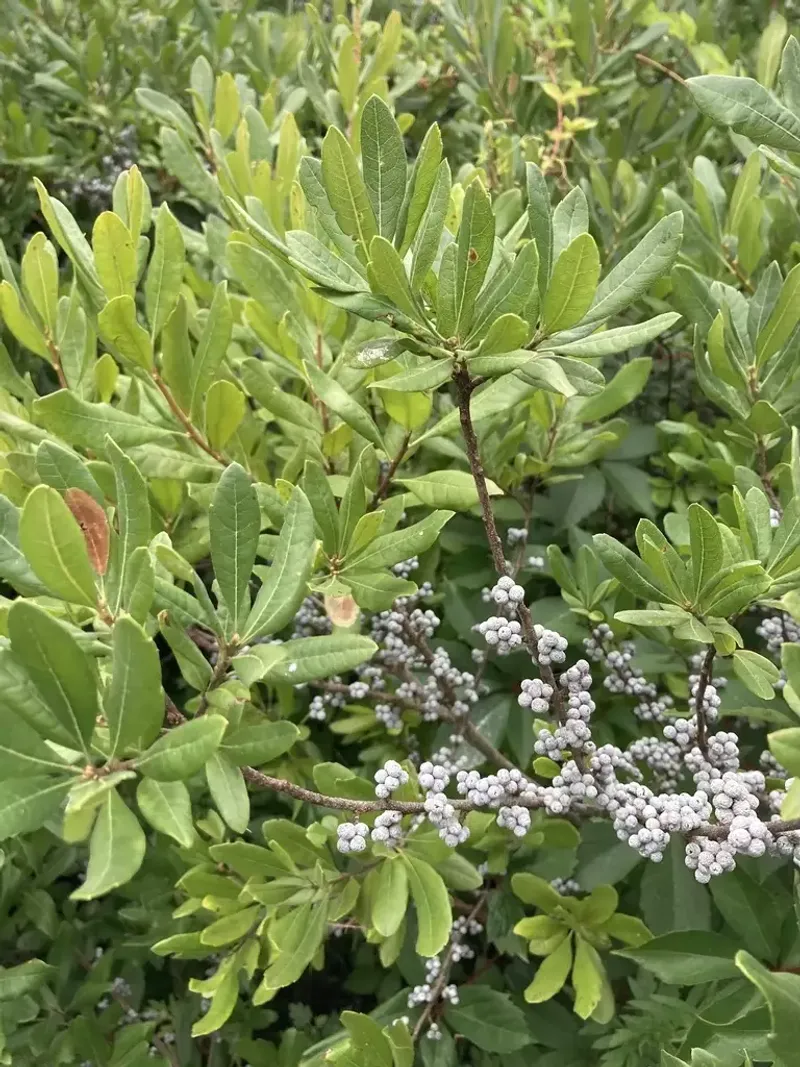Gardening should bring joy, not endless weekend chores that leave you exhausted. After fifteen years of designing landscapes, I’ve learned which plants truly deliver on the promise of beauty without constant attention.
Many homeowners start with high hopes and end up overwhelmed by shrubs that demand frequent pruning, special soil amendments, or protection from every passing storm. I’ve made plenty of mistakes myself, recommending plants that looked fantastic in catalogs but became maintenance nightmares for clients.
For me, the real test is what still looks presentable after I’ve forgotten about it for a season. The following selections have passed that test time and again – surviving drought, neglect, and even my own distraction when life gets busy.
1. Boxwood
Classic for a reason, boxwoods quietly do their job year after year with minimal intervention. Their dense evergreen foliage maintains shape naturally, requiring only occasional light trimming if you prefer crisp edges.
I’ve planted dozens in challenging spots where clients insisted nothing would grow. Years later, those same boxwoods stand unfazed by changing weather patterns or spotty watering schedules.
The newer varieties like ‘Green Velvet’ and ‘Winter Gem’ offer improved cold tolerance and resist the bronzing that affects older types in harsh winters. Just give them decent drainage, and they’ll reward your neglect with steadfast reliability.
2. Spirea
Spireas bloom their hearts out whether you remember to care for them or not. The ‘Magic Carpet’ and ‘Goldflame’ varieties produce vibrant foliage in spring that transitions through gold, orange and red tones as seasons progress.
My clients often call me amazed at how these shrubs bounce back after harsh winters or accidental mower damage. Their fountain-like growth habit creates natural structure without looking wild or unkempt.
Butterflies flock to their summer flower clusters, adding movement to your landscape. A light pruning after the first bloom often triggers a second flowering period – though they’ll perform admirably even if you forget this step.
3. Ninebark
This one earned its name from the peeling layers of bark that add winter interest when other plants have gone dormant. The newer cultivars like ‘Diabolo’ and ‘Coppertina’ offer stunning purple-to-copper foliage that holds its color all season.
What impresses me most is ninebark’s resilience. I’ve watched it thrive in both soggy clay and dry, rocky soil where fussier plants would have given up immediately. Its native roots mean it rarely faces serious pest or disease issues.
The white or pink flower clusters in late spring attract pollinators, while the exfoliating bark provides texture during winter months. This shrub truly delivers four-season appeal without demanding four seasons of attention.
4. Smooth Hydrangea
Unlike their fussier cousins, smooth hydrangeas like ‘Annabelle’ produce spectacular blooms without the pH adjustments or special care. Their enormous white flower heads emerge reliably each summer, even after the harshest winters or accidental pruning.
Last year, my neighbor mistakenly cut his ‘Incrediball’ hydrangeas to the ground in March. By July, they had rebounded with basketball-sized blooms that lasted until frost. This forgiveness makes them perfect for busy homeowners.
Native to woodland edges, these hydrangeas actually prefer some afternoon shade, making them ideal for those tricky north-facing spots or under deciduous trees. They’ll also tolerate more sun if given consistent moisture during establishment.
5. Barberry
Tough as nails, barberry shrugs off poor soil, drought, and neglect while maintaining its distinctive color and form. The compact varieties like ‘Crimson Pygmy’ create natural boundaries without turning into monsters that need constant taming.
My own barberry hedge has survived eight years of sporadic attention, maintaining its rich burgundy color through summer heat and winter snow. The tiny thorns deter deer and neighborhood pets from creating unwanted paths through garden beds.
Modern sterile cultivars address invasiveness concerns in some regions. Just remember to wear gloves when working nearby – those thorns mean business! Plant them where you need reliable color without constant babysitting.
6. Juniper
Junipers bring texture and evergreen structure to landscapes that other plants simply can’t match. From ground-hugging ‘Blue Rug’ to the more upright ‘Skyrocket’, these conifers maintain their distinctive forms and colors with zero intervention.
I’ve used Blue Star juniper near walkways where everything else kept drying out from reflected heat. Years later, they still look exactly as intended – silvery-blue accents that never lose their composure regardless of weather extremes.
Their aromatic foliage naturally repels many insects and browsing animals. Just give them full sun and well-drained soil at planting, then step back and watch them thrive through decades of benign neglect.
7. Yucca
Architectural and bold, yuccas bring dramatic structure to the landscape without demanding anything in return. Their sword-like evergreen leaves form symmetrical rosettes that look intentional rather than neglected, even when you’ve forgotten their existence for months.
Summer brings spectacular flower stalks rising 4-6 feet tall, covered in creamy bell-shaped blooms that attract hummingbirds and butterflies. The ‘Color Guard’ variety adds year-round interest with gold-striped foliage that brightens shady corners.
Honestly, I never expected these to perform so well without regular attention—but here we are. Plant them in well-drained soil, then walk away. They’ll handle freezing temperatures, drought, poor soil, and even salt spray without complaint.
8. Russian Sage
Technically a subshrub, Russian sage creates clouds of lavender-blue flowers from midsummer through fall with zero coddling. Its silver-gray foliage remains attractive even when not in bloom, adding valuable texture to hot, dry sites.
The newer, more compact varieties like ‘Little Spire’ maintain their upright habit without flopping, eliminating the staking older types sometimes needed. Deer and rabbits avoid its aromatic foliage, while butterflies and bees flock to the long-lasting blooms.
After designing dozens of low-maintenance gardens, I’ve found few plants that perform so reliably in challenging conditions. Simply cut it back to about 6 inches in early spring, then forget about it until you’re admiring its billowing purple haze in August.
9. Potentilla
Potentilla keeps producing cheerful yellow, white, or pink flowers from late spring until frost without deadheading or special treatment. This native shrub maintains a naturally rounded shape that rarely requires pruning to stay in bounds.
During a particularly brutal drought season, I watched potentillas continue flowering while neighboring plants wilted dramatically. Their fine-textured foliage stays fresh-looking throughout the growing season, never developing the tired appearance that plagues many flowering shrubs by late summer.
Cold hardiness is another impressive trait – they shrug off zone 2 winters without damage. For sunny spots where you want continuous color without continuous effort, potentilla delivers with remarkable consistency.
10. Arborvitae
When clients ask for privacy screening that won’t demand weekend pruning sessions, I point them toward arborvitae. These evergreens naturally maintain their dense, pyramidal form with minimal intervention, creating living walls that stay attractive year-round.
The ‘Emerald Green’ variety holds its rich color through winter without the bronzing that affects some conifers. For smaller spaces, ‘North Pole’ offers a slimmer profile while maintaining the same carefree nature.
A client once complained that nothing would grow along her windy driveway. Five years after planting a row of arborvitae there, she called to say they’d become her favorite landscape feature – reliable sentinels that perform their screening duty without constant attention.
11. Viburnum
Viburnums might be the ultimate multi-season performers that actually deliver on their promise. Korean Spice viburnum (V. carlesii) fills spring air with intoxicating fragrance, while Doublefile viburnum (V. plicatum) produces horizontal branches laden with white flowers that resemble floating layers of lace.
Fall brings brilliant foliage and colorful berries that attract birds. The larger species like Blackhaw (V. prunifolium) can substitute for small trees in landscape designs, providing structure and seasonal interest without the maintenance requirements of flowering cherries or crabapples.
Unlike many shrubs that look spectacular for two weeks then fade into the background, viburnums earn their keep year-round. Give them average soil and water during establishment, then enjoy years of beauty with minimal intervention.
12. Smokebush
Smokebush creates drama whether you have time to care for it or not. The purple-leaved varieties like ‘Royal Purple’ maintain their rich color all season, while ‘Golden Spirit’ offers chartreuse foliage that lights up shady corners.
Summer brings ethereal plumes of tiny flowers surrounded by wispy hairs, creating the smoke-like effect that gives this shrub its name. These hazy blooms persist for weeks, transitioning from pink to tan as they age.
Left unpruned, smokebush develops into a multi-stemmed small tree reaching 10-15 feet. For smaller spaces, hard pruning in early spring controls size while encouraging larger leaves – though the smoke-like flowers will be sacrificed that year. Either approach requires minimal time investment.
13. Witch Hazel
Witch hazel blooms when nothing else dares, producing spidery flowers in late winter that seem to defy the cold. The native species (H. virginiana) flowers in fall, while Asian varieties like H. × intermedia ‘Arnold Promise’ bloom February through March, often against a backdrop of snow.
Their vase-shaped structure develops naturally without pruning, creating an elegant silhouette that works in both formal and naturalistic settings. Fall brings bonus appeal with foliage ranging from clear yellow to orange-red, depending on variety.
I’ve installed these in several client gardens where they wanted “something interesting” without added maintenance. Years later, they still call each winter to report the first witch hazel blooms – unexpected joy during the garden’s quietest season.
14. Japanese Kerria
Kerria’s bright green stems remain attractive even in winter, while golden yellow flowers cover the branches in spring without any encouragement. The double-flowered form ‘Pleniflora’ produces blooms resembling small yellow roses that last for weeks.
This adaptable shrub performs admirably in those difficult spots between deep shade and full sun where most flowering plants struggle. Its arching branches create a naturally graceful fountain shape that requires pruning only when it eventually outgrows its space.
A landscape designer friend calls this her “problem-solver plant” for difficult sites. I’ve used it alongside woodland paths where its cheerful flowers brighten shady corners without demanding attention. A light pruning after flowering keeps it tidy, but it forgives those who forget.
15. Fothergilla
Fothergilla flies under the radar but deserves more recognition for its multi-season appeal and undemanding nature. Spring brings bottlebrush-like white flowers with a honey scent that perfumes the garden for weeks before the leaves even emerge.
Summer’s blue-green foliage looks fresh all season without the tatty appearance many shrubs develop by August. Then comes the real show – fall color in brilliant combinations of orange, red, and yellow on each leaf, rivaling the most spectacular maples.
Despite these performance credentials, fothergilla asks almost nothing of the gardener. No deadheading, minimal pruning, and average water once established. I’ve planted dozens in client gardens and never received a single maintenance call about them.
16. Deutzia
Slender deutzia creates cascades of pure white flowers each spring on a compact frame that rarely exceeds three feet. Unlike many spring bloomers that require careful pruning to maintain flowering, deutzia performs reliably year after year with almost no intervention.
The arching branches become completely covered with star-shaped blossoms, creating the appearance of a flowering fountain. Modern varieties like ‘Nikko’ and ‘Chardonnay Pearls’ offer improvements like more compact habits or golden foliage that extends the season of interest.
After installing some in my mother’s garden years ago, she called them her “forget-about-it plants” because they continued performing beautifully despite her self-described benign neglect. For small spaces where you want spring impact without spring chores, few shrubs deliver so reliably.
17. Sumac
Sumacs transform from background players to starring roles when autumn arrives, with compound leaves turning fiery red and orange. The native staghorn sumac (R. typhina) develops velvety antler-like branches that add winter interest when other plants have gone dormant.
Compact varieties like ‘Tiger Eyes’ bring this dramatic color to smaller gardens without the spreading habit of the species. Female plants produce distinctive red berry clusters that persist through winter, providing food for birds when other sources are scarce.
These native shrubs thrive in poor soil where fussier plants fail. I’ve used them to stabilize slopes where nothing else would grow, creating maintenance-free drifts of seasonal color. Their suckering nature means they’ll gradually colonize difficult areas without your help.
18. Elderberry
Elderberries combine ornamental qualities with edible harvests, all while requiring minimal care. The European black elderberry (S. nigra) offers varieties like ‘Black Lace’ with finely cut purple foliage resembling Japanese maples but with none of their fussiness.
Large flower clusters appear in early summer, attracting pollinators before developing into berries prized for jams and immune-boosting syrups. Birds will happily harvest any fruits you don’t collect.
Growth can be vigorous, but these shrubs respond well to hard pruning in early spring if they exceed their boundaries. A client once apologized for “neglecting” her elderberry for three years. I showed her how its natural form had actually developed into an elegant multi-stemmed specimen that now anchored her perennial border.
19. Bayberry
Bayberry’s silvery-gray berries once provided wax for colonial candles, but today this native shrub earns its place through sheer adaptability. Salt spray, poor soil, drought, and neglect – bayberry handles it all without complaint while maintaining an attractive, semi-evergreen presence.
Glossy, aromatic leaves release their distinctive scent when brushed against, adding sensory appeal to the landscape. The waxy berries persist through winter, eventually providing food for birds when other sources are depleted.
I’ve used bayberry extensively in coastal landscapes where few other plants survive. One client reported that after Hurricane Sandy submerged her garden in saltwater, her bayberries were among the few plants that emerged unscathed the following spring – testament to their remarkable resilience.

